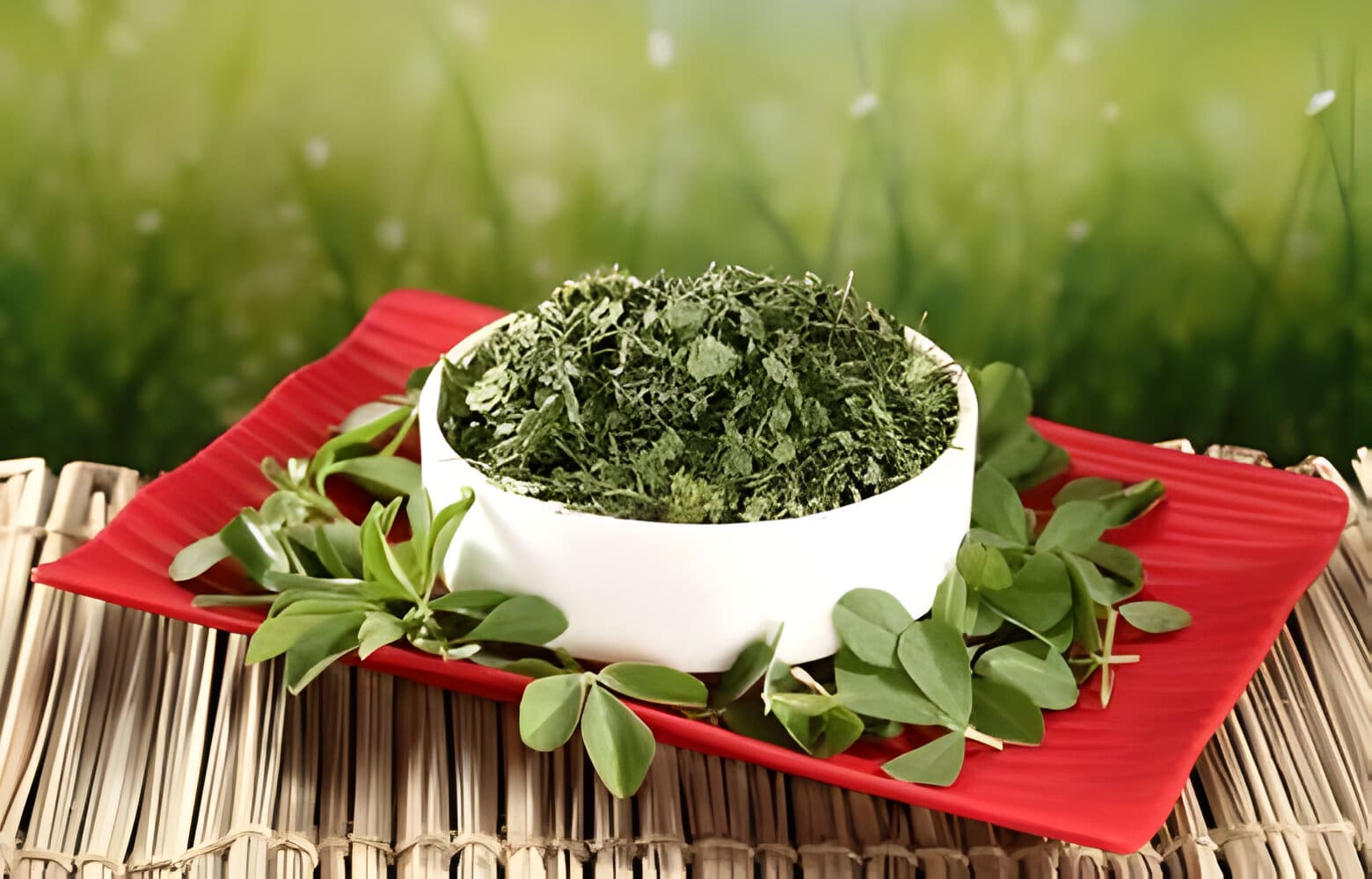Table of Contents
Herbs and spices cover the very essence of culinary traditions the world over as they impart simple dishes with depth and flavor. Nowhere is this truer than in Indian cuisine where most simple dishes gain an almost magical transformation into extraordinary meals. Of these the one herb that sets itself apart from the rest is methi or fenugreek in English and more popularly its dried version—kasuri methi.
Besides being known for the great taste it imparts its health benefits are quite numerous.
Kasuri methi is simply the dried form of methi leaves. It develops an enhanced flavor when it dries making it a very potent ingredient to use in cooking.
What is Kasuri Methi?
Botanically it is known as Trigonella foenum-graecum and it is the most extensively used leafy green herb in Indian cooking.
Appearance and Taste
The fresh fenugreek leaves are minimal in size being green in color and slightly rounded in shape. They present a recognizable nutty flavor with a slight bitterness that complements plenty of dishes.
Nutritional Benefits
Methi is a powerhouse of nutrients including vitamins A C and K and also the minerals iron and calcium and dietetic fiber. All of them are fine foods to go into the diet.
Culinary Uses
Fresh methi is added to innumerable traditional classic dishes. It is used to reinforce numerous curries parathas (stuffed Indian flatbreads) and even salads and belongs there to give them an addition of taste and fostered nutrition.
Preparation Process
Kasuri methi on the other hand is the herb made from the yellow and green product of fresh methi. Harvested and cleaned first the fresh leaves are then dried by later exposing them to air and low heat. The end product is therefore a fragrant dried herb obtaining the very quintessence of methi.
Appearance and Taste
In most cases it is available as ready-crumbled on the market in singly packed greenish-brown leaves. It tends to have more intensity and to be stronger and earthy in flavor than the fresh methi with a slightly bitter undertone.
Methi vs. Kasuri Methi
Taste and Textures Fresh methi has a milder slightly bitter and nutty flavor with soft texture while kasuri methi has a more potent taste an earthy flavor and is dry and crumbly in texture. Making Personalized Cooking Fresh methi suits subtle dishes; for example the flavor is needed in parathas or in fresh salads.
Kasuri methi has a concentrated flavoring and hence suits best rich curries gravies or to finish off dishes with fragrant touch. Both fresh and very nutritious. The first is quite rich in most vitamins while the latter retains most minerals and fiber. They are beneficial in digestion and in controlling blood sugar.
Additional Facts About Kasuri Methi
Versatile Flavor Enhancer: With the pungency of the flavor kasuri methi becomes a versatile ingredient in quite a number of cuisines not just Indian. It can elevate soups stews and even pasta sauces.
Low-Calorie Ingredient: Kasuri methi is a low-calorie herb; users would be able to add only a minimal amount of extra calories by adding it to any food item.
Antioxidant-rich: The process of drying methi leaves concentrates its antioxidant properties and aids in fighting free radicals thereby reducing oxidative stress in the body.
Digestive Aid: Kasuri methi is a digestive herb. Its high amount of fibers helps to alleviate digestional problems like bloating and indigestion.
Blood Sugar Regulation: Both methi and kasuri methi are very popular in reducing blood sugar levels; hence they are observed to be quite beneficial for people with diabetes.
Culinary Tradition: Kasuri methi is usually found in most households within the spice cabinet of Indians used for finishing many dishes with a uniqueness and aroma touch.
Preservative Properties: This herb itself holds great preservative values and hence upon using it as a seasoning ingredient it helps to enhance the life of some dishes.
Storage Facility: Since Kasuri methi is dried its life can be considered to be very long compared to that of green methi. It retains its flavor even if stored in an airtight container in places that are cool and dry for months.
Medicinal Uses: Besides being used in cooking kasuri methi has immense value in traditional medicine for a plethora of health issues including menstrual cramps cholesterol management skin diseases and others.
Conclusion
Methi and kasuri methi serve up equally large dollops of the original charm of their fresh versions. While the fresh version of methi can be complementary to lighter fresher dishes adds an element of heft depth and richness to heartier meals. Building a repertoire in cookery using both can offer enormous variety in flavors and health benefits. So next time you’re in the kitchen reach for the kasuri methi and experience the magic it lends to your foods. Happy cooking!
If you want read more visit: urbanmatter


